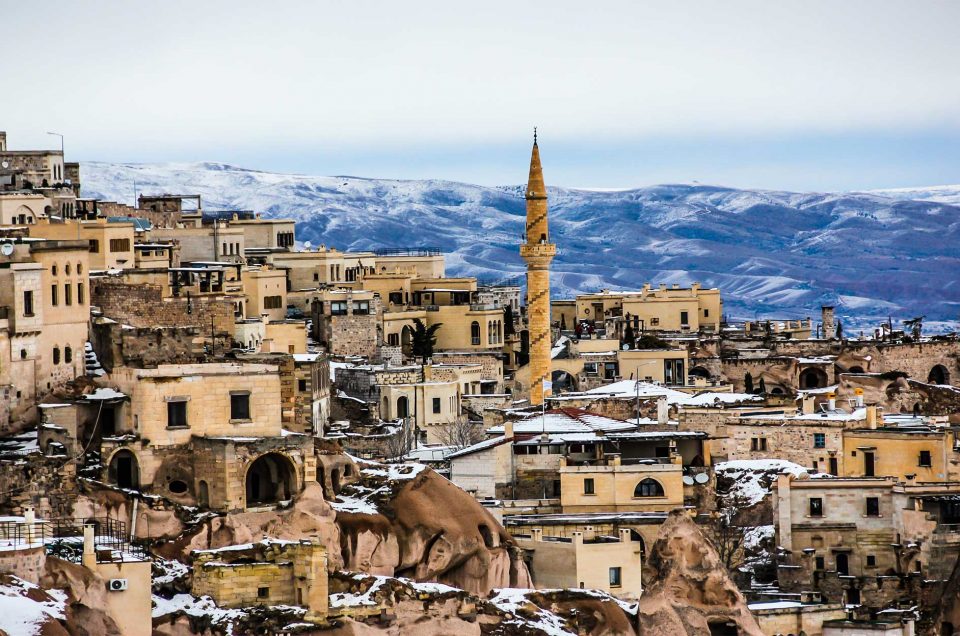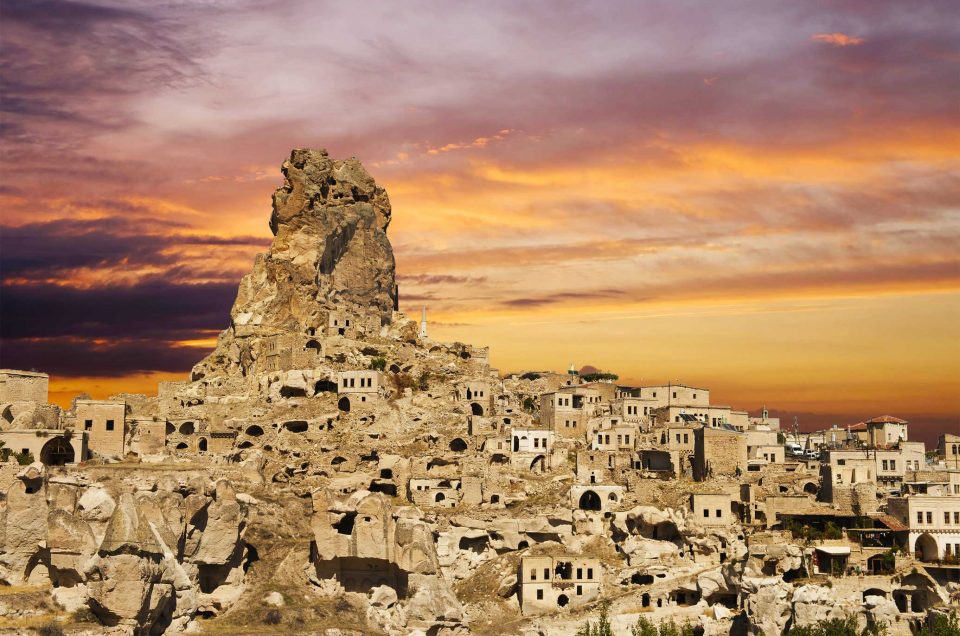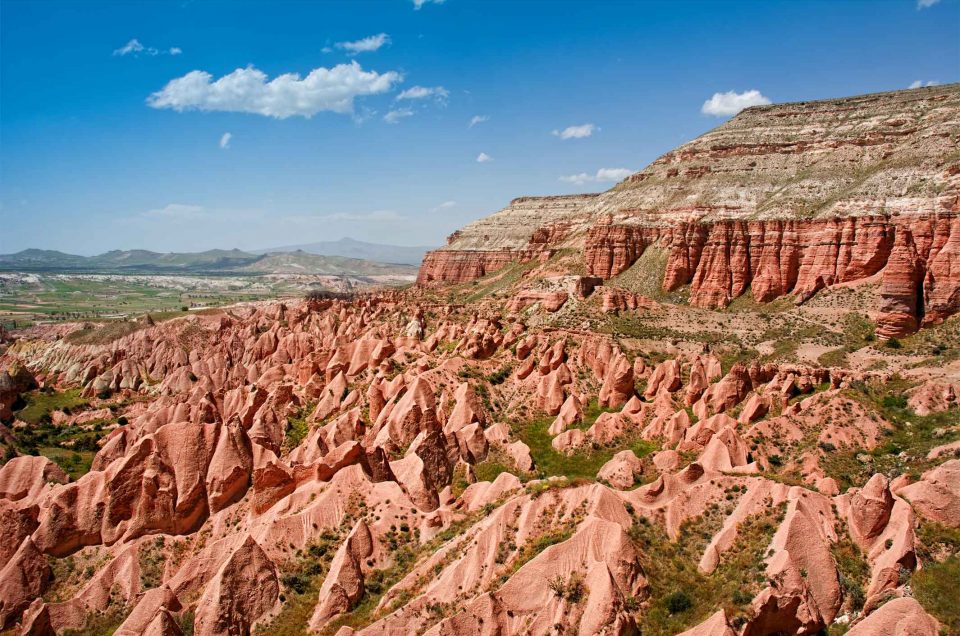Kaymakli underground city is built under the hill known as the Citadel of Kaymakli and was opened to visitors in 1964. The people of Kaymakli (Enegup in Greek) have built their houses around nearly 100 tunnels of the underground city. The inhabitants of the region still use the most convenient places in the tunnels as cellars, storage areas and stables, which they access through their courtyards. Kaymakli underground city has low, narrow and sloping passages. While the underground city consists of 8 floors below ground, only 4 of them are open to the public today, in which the spaces are organized around ventilation shafts.
The first floor of the underground city is the stable. The small size of this area suggests that there could be other stables in sections that have not yet been opened. The passage to the left of the stable contains a millstone door and leads into the church. To the right of the corridor there are rooms which were used as living areas. The church on the 2nd floor has a single nave and two apses. In front of the apses is an altar, and on the sides are sitting platforms. There are also some living areas on this floor.
The most important areas of the underground city are on the 3rd floor. Besides numerous storage places, wineries and the kitchen, the block of andesite with relief-texture found on this floor is very interesting. Recent research has proved that this stone was used as a melting pot for copper. The stone was not brought here from the outside but was part of the andesite layer unearthed while hollowing. To be able to use it as a melting pot, 57 holes were carved into the surface of the stone. The copper ore, about 10 cm in length, would be put into one of those holes and would be hammered using a hard piece of rock. This technique has been known since the prehistoric periods. The copper brought to the Kaymakli underground city was probably dug from a quarry between Aksaray and Nevsehir.
The fact that there are a lot of storage rooms and places to put earthenware jars in the wineries on the 4th floor, indicates that the people living in this underground city were economically stable. The ventilation shaft can also be seen from the 4th floor. It is a vertical well and passes all floors down like on the elevator in an apartment. The depth of the ventilation shaft is about 80 meters in total.
Even though the whole city has not been completely opened, and since only 4 floors have been uncovered, it is certain that Kaymakli is one of the largest underground settlements in the region. It is accepted as the widest underground city of Cappadocia, among the explored ones. The number of the storage rooms in such a small area supports the idea that a great number of people resided here. Archaeologists think that this could have been up to 3500 people.









